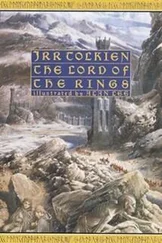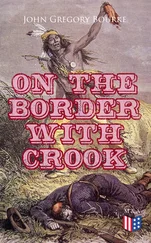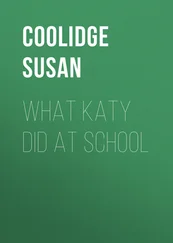However, once the raid was over, any considerations of the need for secrecy were swept away like the dams, by the propaganda value of publicising the raid. The Dams raid chimed perfectly with the narrative created by British propagandists: the plucky but overwhelmingly outnumbered underdog fighting alone, and through expertise, ingenuity, courage and daring, breaching the defences of the monolithic enemy.
The Daily Telegraph exulted on its front page that ‘With one single blow, the RAF has precipitated what may prove to be the greatest industrial disaster yet inflicted on Germany in this war,’ 20and the other newspapers were equally triumphant in tone. Guy Gibson was awarded a Victoria Cross for his leadership of the raid and more than half the surviving members of the squadron were also decorated, but Air Marshal Arthur ‘Bomber’ Harris’s euphoria in the immediate aftermath of the raid soon gave way to pessimism. In a letter to the Assistant Chief of Air Staff he said he had ‘seen nothing … to show that the effort was worthwhile, except as a spectacular operation’, 21and although he often appeared unmoved by aircrew losses on Main Force – the major part of Bomber Command which carried out the near-nightly area bombing of German cities – he later remarked that missions where Victoria Crosses went along with high losses should not be repeated.
However, the damage to German industry and infrastructure was undoubtedly considerable. Thousands of acres of farmland and crops were buried by silt, and the land could not be tilled for several years. Food production, output from the coal mines and steel and arms manufacture were all badly hit. The destruction of power stations further reduced industrial output, and the disruption to water supplies caused by wrecked pumping stations and treatment plants not only deprived factories of water but left firemen in the industrial towns unable to extinguish the incendiaries dropped by RAF bombers. The destruction of 2,000 buildings in Dortmund was directly attributed to this. 22
Nonetheless, when Barnes Wallis, who had also hurried to Scampton to add his congratulations, was told of the deaths of so many airmen, he cried. ‘I have killed all those young men,’ he said. His wife wrote to a friend the next day: ‘Poor B didn’t get home till 5 to 12 last night … and was awake till 2.30 this morning telling me all about it … He woke at six feeling absolutely awful; he’d killed so many people.’ 23Although Guy Gibson and the others did their best to reassure him, according to his daughter Mary, Wallis lived with the thought of those deaths throughout the rest of his life. 24
The Australian pilot Mick Martin’s opinion was that most of the casualties on the Dams raid had been caused because their navigation had been ‘a bit astray’ and, more importantly, because pilots didn’t keep below 200 feet on their way to the target. ‘Of course,’ said his rear gunner, who shared Martin’s views, ‘it’s easy to criticise when you’re sitting down at the back, arse about face, instead of up front where you see things rushing at you head-on, and even though it is moonlight, which can be almost as bright as day, there is a great risk of miscalculation of height, and objects such as power lines don’t show up like the Boston Stump’ 25– the remarkably tall tower of St Botolph’s church in Boston, rising over 270 feet above the Lincolnshire fens, and visible from miles away.
The surviving aircrews washed away the bad memories of the night and toasted their success with a few beers. The Mess bars were reopened and drink was taken in considerable quantities. Some of the aircrews had ‘a mug of beer in each hand’, according to the Squadron Adjutant, Harry ‘Humph’ Humphries. ‘I could hardly keep my eyes open, yet these lads drank away as though they had just finished a good night’s sleep. The only thing that contradicted this was the number of red-rimmed eyes that could be seen peering into full beer mugs.’ 26‘The celebrations were in full swing,’ Les Munro says, ‘and I wondered if I really deserved to be part of it all. Should I be taking part in this when I hadn’t reached the target? All that training, preparation had been for nothing. But no one ever made any comment about us not getting to the target.’
The celebrations ended with a conga line of inebriated airmen visiting Station Commander Group Captain Charles Whitworth’s house and then departing again, having deprived the sleeping Whitworth of his pyjamas as a trophy. But while the crews had been celebrating or drowning their sorrows, Harry Humphries had the painful task as Squadron Adjutant of composing fifty-six telegrams and then fifty-six personal letters to wives and families, telling them that their loved ones would not be coming home.
Once the initial euphoria had passed, reactions within the squadron to the success of the Dams raid tended to be more muted. Some were elated but for most, ‘we were satisfied in doing the Dams raid,’ Johnson says, ‘but nothing more really. It was just another job we had to do. I had no sense of triumphalism or excitement, we realised what we had done, and were very satisfied, but that was all.’ 27However, in a public demonstration of the importance of the raid to British morale, King George VI and Queen Elizabeth paid a visit to the squadron on 28 May 1943, with all the aircrews lined up, standing to attention and with their toecaps touching a white line that had been specially painted on the grass. They spent five hours there, though ‘naturally, of course, neither the King nor Queen visited the Sergeants’ Mess’. 28
The gallantry awards for the raid – one Victoria Cross, five DSOs, fourteen DFCs, eleven DFMs and two Conspicuous Gallantry medals – were then awarded by the Queen in an investiture at Buckingham Palace on 22 June. Johnny Johnson hadn’t ‘the foggiest idea’ what the Queen said to him. ‘I was so bloody nervous. All I can remember saying is “Thank you, Ma’am” and that was it.’ 29Although he was a teetotaller – ‘I couldn’t even stand the smell of beer,’ he says, ‘so I never went into the bars apart from a quick dash at lunchtime to pick up cigarettes’ 30– he was in a minority of close to one on the squadron, and his fellows more than made up for him, with the investiture the trigger for a marathon booze-up. They were given a special carriage on the train taking them to London, where they had ‘a high old time’, and after chatting to the driver and his fireman during a stop at Grantham, Mick Martin’s crew made the next stage of the journey down to Peterborough on the footplate of the engine. They each threw a few shovelsful of coal into the firebox and took turns to operate the regulator under the supervision of the driver and ‘gave the old steam chugger full bore’. The driver offered to stand them a drink at any pub of their choice in London, and they duly obliged him at the appropriately named Coal Hole in the Strand.
The more well-to-do of the aircrews stayed at the Mayfair Hotel, while the less affluent settled for the Strand, and in the words of one of the Australians, ‘for twenty-four hours there was a real whoopee beat-up’. 31As a result none of them were looking at their best on the morning of the investiture. Mick Martin’s braces had disappeared somewhere along the line, but his resourceful crewmates ‘scrounged a couple of ties and trussed him up like a chicken, sufficient to get him onto the dais at Buckingham Palace, down the steps and off again’.
The squadron’s resourcefulness was also demonstrated by one of Mick Martin’s crewmen, Toby Foxlee, who, as petrol was strictly rationed, obtained a regular supply of fuel for his MG by ‘a reduction process’ which involved pouring high-octane aircraft fuel through respirator canisters he had scrounged; ‘the little MG certainly used to purr along pretty sweetly’. 32
Читать дальше












